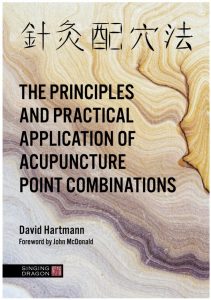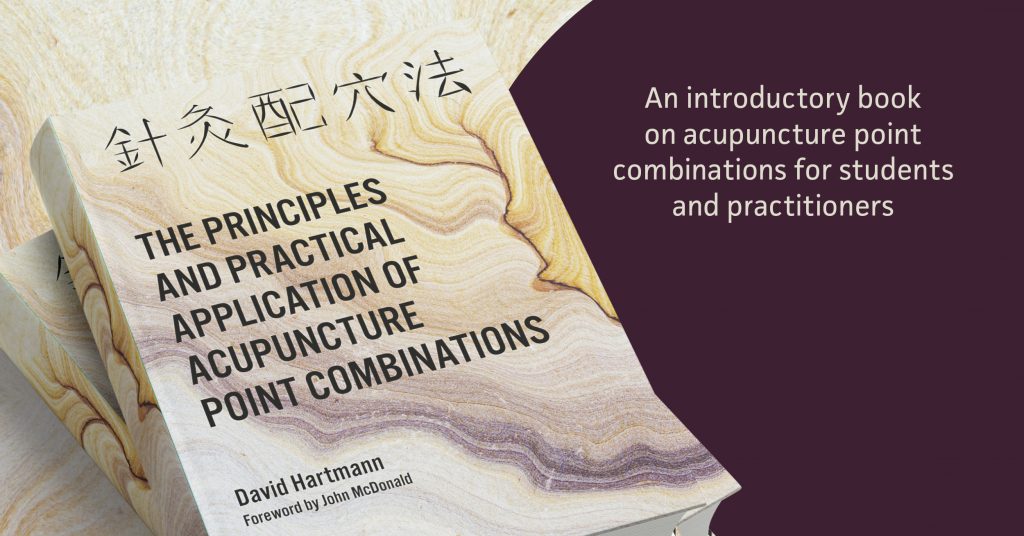As part of our Meet The Singing Dragon Author series, we speak to authors to discuss their motivation for entering their respective industries, inspiration for writing their books, what challenges they faced, and whom they would recommend their books. Is there a specific Singing Dragon author you would like to hear from? Let us know in the comments or join the conversation using #MeetTheSDAuthor.
 David Hartmann, author of The Principles and Practical Application of Acupuncture Point Combinations
David Hartmann, author of The Principles and Practical Application of Acupuncture Point Combinations
How did you become interested in acupuncture?
I was originally going to be a physiotherapist or nurse, but life has a funny way of making sure you go in the direction you are supposed to. Three events ensured I became an acupuncturist instead. 1) In year 11 at school I had acupuncture for migraines and have not had a migraine since. 2) In year 12 I got great relief from stress with acupuncture. 3) In 1993 Mum was driving her car near Coffs Harbour (New South Wales, Australia) and her windscreen smashed. During the repairs she stumbled upon a brochure at a coffee shop for the Australian College of Natural Medicine (now Endeavour). We went for an interview and fell in love with the college. During my first semester as a student I went to the out-patient clinic for weekly treatment for severe depression. Acupuncture brought me out of the black pit and the rest is history.
How did you begin your career? Was it challenging to establish yourself as a professional? If so, what challenges did you encounter?
I moved from Brisbane to the Gold Coast (Queensland, Australia) after completing my degree because my girlfriend got a full-time job. We knew nobody and I had to start from scratch. I did two things that made a very positive impact on my career. 1) I took a stall at a health and fitness expo and offered people a discount on my treatments. 2) I did home visits to several retirement villages.
It was still challenging to establish myself, but those two things did make a very big difference for me.
The obvious challenges were not knowing anyone on the Gold Coast; not having good business savvy (I didn’t get taught how to be a good salesman during my studies) and being nervous about my abilities to treat whatever patients came to me for.
What did you enjoy about writing the book?
Mostly, it had to do with the last sentence I wrote for the previous question. One of the most challenging things about acupuncture is coming across patients that are extremely complex. What do you do? What is your diagnosis? Where do you even start? How many points should you use? Where will you put the points? How long do you leave the needles in for? What if you make them worse?
Therefore, my greatest enjoyment was writing a book that gets the reader to really look at what treatments they use. I discuss this more in my answer to the next question.
There were a lot of other enjoyable aspects of writing this book. I guess the next most pleasing part was seeing that I could take my thoughts and get them down on paper in an engaging manner. I have already had heaps of people emailing me to tell me how ‘easy-to-read’ yet relevant it was. That they also learnt a lot and they have now challenged themselves to analyse the points they use and potentially improve on them.
To whom would you recommend the book?
Any acupuncture student or practitioner can benefit from reading my book. The main reason for this is the book is designed to make you a better acupuncture version of yourself. As in, get you to break out of treating patients the ‘same old way’, because sometimes the ‘same old way’ doesn’t work. So, what do you do then? Or perhaps the ‘same old way’ isn’t even the ‘best way’ to treat your patient? But because it’s the way you have always done it, you don’t think you need to change anything.
This book challenges you to look at how you treat; look at the points you choose; analyse whether they are the best points you could be using for your patient or whether there might be better connections if you changed a few points around.
My book encourages you to be better; better than you already are. And that has to be a good thing for our industry!
Can you let us know what it is about?
So, what is the book about? The simplest explanation is that it is a textbook designed to get the reader to think more about the acupuncture point combinations/treatments they employ in clinic. For me, this is one of the most important, but typically least taught, elements of acupuncture treatment. We give students a list of points to use for different Zang Fu patterns, but then we don’t take the time to explain how each of those points works in the treatment.
As Aristotle once said, “The whole is greater than the sum of its parts” and in Chinese medicine we apply that principle to herbal formulas, but we don’t for acupuncture treatments. Therefore, I felt it was important to write a book to teach us how to combine acupuncture points. The book doesn’t tell you how to do it; it teaches you how to do it, thereby making it a big asset for the development of acupuncturists world-wide.
 The Principles and Practical Application of Acupuncture Point Combinations
The Principles and Practical Application of Acupuncture Point Combinations
David Hartmann. Foreword by John McDonald
Explains the mechanics of acupuncture point combinations for Chinese medicine students and practitioners. The book explains how each point works and how best to combine points for good clinical results. Case studies throughout demonstrate the application of theory to practice.
